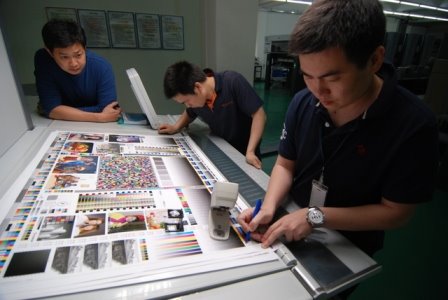Following is a comparison of Japan Color Standard vs. the recommended ISO L*a*b* values:
ISO
Japan Color
(btw...Japan Color Standard for black is 16.5 vs. ISO of 16.0)
Become a G7 Master Printer: Technology in the Service of Creativity

IIDEAlliance's G7 is a revolutionary new methodology for calibrating proof-to-press and press-to-press across any printing method. Developed by our industry's leading color experts, the G7 methodology includes revolutionary techniques for dramatically improving print quality and consistency. As G7 'Experts', we can provide step-by-step training within your company to calibrate proofing and printing systems using the latest G7 methodology. G7 methods have been adopted worldwide: files and proofs created anywhere in the world using the G7 methods, can be matched in any pressroom. For your business, this means improved color fidelity, press sheets that match the proof resulting in quicker make-readies, faster time-to-market, and lower manufacturing costs. Take the first simple steps toward better printing: contact us at Cathay America: jpasky@gmail.com

 When I'm 'shepherding' books through the manufacturing process, I first check their proofs for compliance with the ISO standard by insisting that they make me a proof of the Idealliance proofing bar. I check it with my EyeOne. I like to see the proof as close as possible to a Delta E of 1.0. If they are making good proofs, we're half-way home!. I then have them proof the job and send it to my client for his approval.
When I'm 'shepherding' books through the manufacturing process, I first check their proofs for compliance with the ISO standard by insisting that they make me a proof of the Idealliance proofing bar. I check it with my EyeOne. I like to see the proof as close as possible to a Delta E of 1.0. If they are making good proofs, we're half-way home!. I then have them proof the job and send it to my client for his approval.



